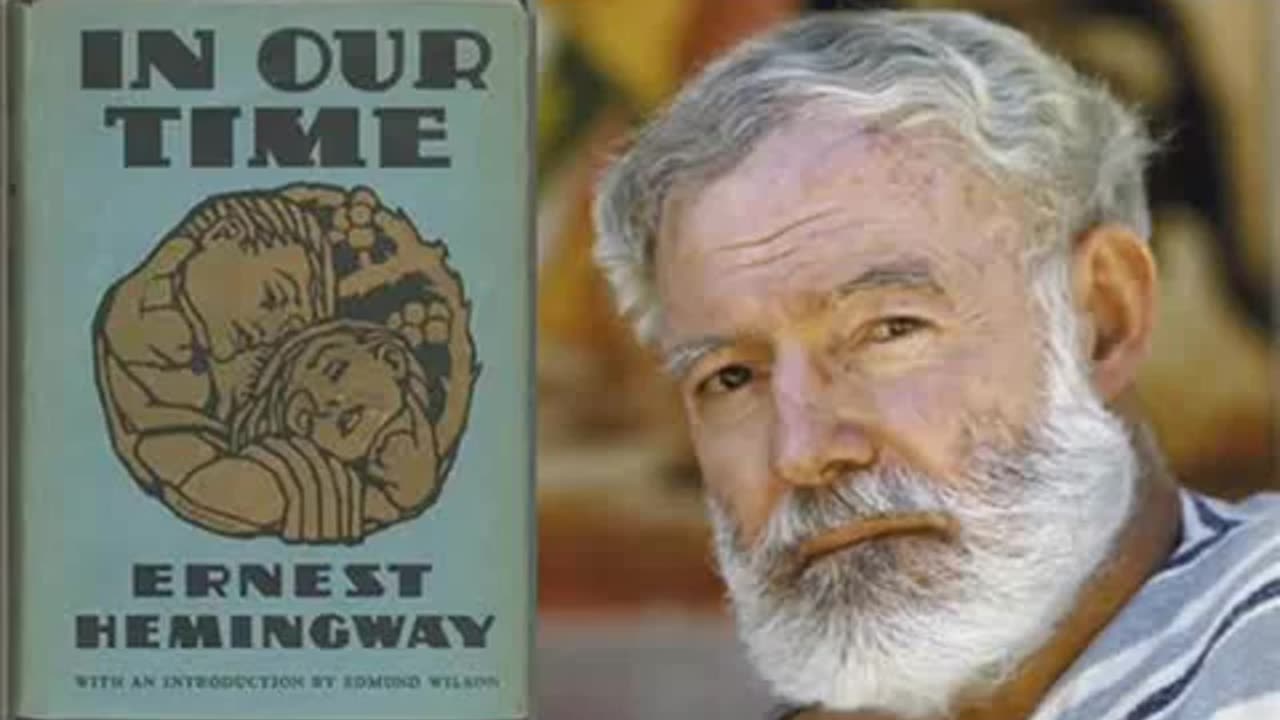Premium Only Content

Summary: In Our Time
"In Our Time" is a literary masterpiece that catapulted Ernest Hemingway into the ranks of the most celebrated American authors of the 20th century. This collection of short stories, first published in 1925, is a vivid and poignant exploration of the human experience in the aftermath of World War I. Hemingway's spare yet evocative prose, often described as the "Iceberg Theory," conceals as much as it reveals, inviting readers to engage deeply with the characters and their inner struggles.
Set against the backdrop of a world scarred by conflict and transition, the stories in "In Our Time" capture the essence of a generation grappling with the profound changes wrought by war. Through tales of soldiers, fishermen, bullfighters, and ordinary individuals, Hemingway weaves a narrative tapestry that delves into themes of courage, love, loss, and the enduring resilience of the human spirit.
Hemingway's signature style, characterized by short, declarative sentences and an economy of words, allows readers to glimpse beneath the surface of his characters' lives. Each story is a snapshot, a slice of existence, leaving ample room for interpretation and introspection. The author's ability to convey the profound with the seemingly mundane has made "In Our Time" a timeless classic that continues to resonate with readers across generations.
In the pages of this collection, Hemingway invites us to confront the complexities of human existence and the scars left by war, all while celebrating the indomitable spirit that carries us forward, even in the darkest of times. "In Our Time" remains a testament to Hemingway's genius and an enduring work of literature that continues to captivate and inspire readers to this day. As you embark on this literary journey, prepare to be moved, challenged, and ultimately enriched by the timeless stories contained within these pages.
-
 8:00:02
8:00:02
SpartakusLIVE
22 hours agoFIRST Pick of the Fourth Round for the $100,000 Tournament
104K3 -
 16:18
16:18
Mrgunsngear
15 hours ago $24.82 earnedBlack Aces Tactical S4 Tactical - Benelli M4 Clone But Does It Work?
137K16 -
 2:05:15
2:05:15
Right Side Broadcasting Network
16 hours agoLIVE REPLAY: President Trump Attends UFC Fight 314 - 4/12/25
162K15 -
 2:07:42
2:07:42
BlackDiamondGunsandGear
15 hours agoWho’s in Town for This Stream?
94K5 -
 1:24:56
1:24:56
Quite Frankly
1 day ago"Wild Tales: Crazy Story Hotline" | The Brothers Ep. 1
130K16 -
 12:37
12:37
Tundra Tactical
22 hours ago $6.92 earned🚫🚫 Biden Era GUN CONTROL Gone!!!! 🚫🚫
94.3K24 -
 1:00:09
1:00:09
Motherland Casino
14 hours ago $7.31 earnedCynthia X Mia
78.6K7 -
 5:32:47
5:32:47
BubbaSZN
20 hours ago🔴 LIVE - BUBBA PLAYS WARZONE SEASON 3
54.7K2 -
 2:29:26
2:29:26
Mally_Mouse
21 hours agoSaturday Shenanigans!! - Let's Play: REPO
68.9K14 -
 8:07
8:07
WhaddoYouMeme
1 day ago $5.63 earnedBut His Response Left Them Speechless!
52.2K57